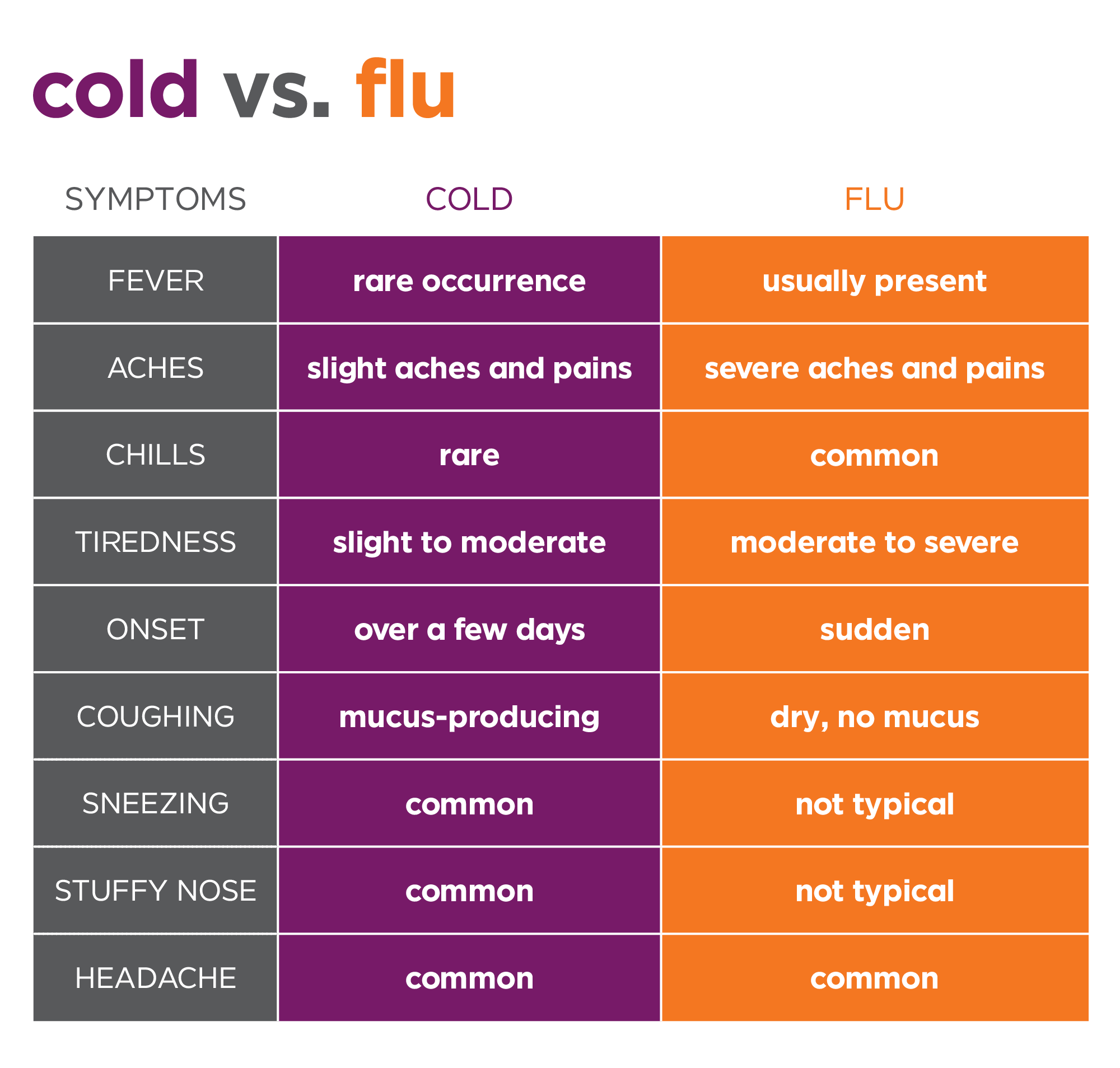You can help prevent the flu, and the spread of the flu, by getting a yearly flu shot.* MedExpress centers stock each season’s flu vaccine every fall to help patients protect themselves as soon as possible.
What is the Flu?
Influenza – the flu – is a highly contagious respiratory illness caused by a flu virus. The human influenza A and B viruses are responsible for the seasonal outbreak of flu in the United States each year. H1N1 is also a more well-known flu strain and is commonly referred to as “swine flu.”
The time when flu is most prevalent is called “flu season,” which is usually October through March in the United States. The duration of flu season can vary, though, and at times flu activity can last through May. According to data from the Centers for Disease Control and Prevention, flu cases generally peak between December and February.1
While most healthy people recover from the flu within a few weeks, there are some people who are considered at risk of developing severe complications from the flu – like pneumonia – that could result in hospitalization.
These high risk groups include:
- Children younger than 5 years old
- Pregnant women
- The elderly
- Those with chronic illnesses or compromised immune systems
Flu Symptoms
Flu symptoms are similar to cold symptoms, but can be more severe. They include:
- Sudden onset of illness
- Fever
- Chills
- Sore throat
- Runny or stuffy nose
- Cough
- Body aches
- Tiredness/fatigue
- Vomiting or diarrhea (more common in children)
Not everyone who has the flu will have all of the symptoms above, including fever, and some symptoms may last longer than others, such as fatigue.

Diagnosing the Flu
When influenza is prevalent, a clinical diagnosis may be made by your MedExpress medical team based on your history, symptoms, and physical exam. There are also tests that the physician, physician assistant, or nurse practitioner may use to confirm the presence of the influenza virus. The most common ones that are used are "rapid influenza diagnostics tests," which can provide results within about 15 minutes.
For the test, the inside of your nose or the back of your throat will be swabbed to obtain a sample that will then be tested on site at MedExpress.
Treating the Flu
The flu can be treated with antiviral drugs. And while you are waiting for the flu to run its course, you can ease your symptoms at home to help you feel more comfortable until you are better.
Antiviral Medication
The flu can be treated with certain antiviral drugs that are available only through a prescription. It is recommended that you begin a course of antiviral drugs within two days after experiencing symptoms. So if you think you may have the flu, it’s important to visit a healthcare professional to begin antiviral medications as soon as possible. These medications can help lessen the severity of symptoms and can reduce the time you are sick by one to two days.
Additionally, even if they missed the two-day window, people with a high risk of developing complications from the flu (such as pneumonia or worsening chronic medical conditions) should still take antiviral medications.
Note: Antiviral drugs are different from antibiotics, which are used to treat bacterial infections. Like colds, the flu is caused by a virus and cannot be treated with antibiotics.
At-Home Symptom Relief
While your body is working hard to fight the flu, you can give your immune system some support by:
- Getting plenty of rest.
- Drinking lots of fluids to stave off dehydration.
- Using a humidifier to ease nasal congestion.
- Gargling salt water to soothe your sore throat.
- Taking ibuprofen, acetaminophen, or aspirin to reduce achiness or headaches. However, do not give aspirin to children due to the risk of Reye’s syndrome.
(Before starting a new medication, consult your healthcare provider to determine if taking these medications are appropriate for you or your child.)
Recovering from the Flu
It can take people up to three weeks to recover fully from the flu. You might notice that you are more fatigued or you might have a slight cough for weeks afterward. Take time to recuperate and rest as much as you can.
While most people recover completely from the flu in a few weeks, it can also cause secondary illnesses, such as ear infections, sinus infections, bronchitis, or pneumonia. If you begin to feel worse after three or four days with the flu, or notice the onset of new symptoms, such as ear pain or constant coughing, seek medical care right away. These new symptoms could mean that you have developed a secondary infection.
Preventing the Flu
One of the best ways to prevent the flu is to get a flu shot every year, ideally in September or October before flu season starts.
The flu virus is most commonly spread through droplets in the air caused by someone who is sick with the flu sneezing or coughing. However, flu viruses can live on surfaces – like doorknobs or cell phones – for up to 24 hours.
There are some additional steps you can take to protect yourself during flu season:
- Avoid touching your face, nose, mouth, and eyes – places where germs can enter your body.
- Avoid contact with people who are sick.
- Wash your hands as often as you can, especially if you touch shared surfaces (e.g. door handles) in high-traffic areas.
And finally, if you or your children have the flu, you are generally the most contagious in the first three to four days after becoming sick. Here are measures you can take to help prevent spreading your illness to others:
- Stay home from work or keep your child out of school for at least 24 hours after the fever is gone (without the use of fever-reducing medicine).
- Sneeze or cough into a tissue and throw it away immediately afterwards. Wash your hands after you’ve tossed your tissue.
- Sneeze or cough into the crook of your elbow if you don’t have a tissue handy.
Differences Between Colds and the Flu
Colds and the flu are both viral illness, and sometimes it can be hard to tell them apart. With our helpful chart below, you can learn about cold and flu symptoms and how the symptoms may show up differently for a cold or the flu.

Looking for an alternative version of the above infographic?
Differences Between the Flu and COVID-19
While the flu and COVID-19 are respiratory illnesses caused by two different viruses, they share many similar symptoms.
However, there are a few key differences. The symptoms of the flu come on quickly and can appear anywhere from one to four days after infection. COVID-19 symptoms can appear anywhere from two to 14 days after infection, but most develop five days after being infected. Another key differentiator is that COVID-19 may impact your ability to taste and smell.
References:
1 The Centers for Disease Control and Prevention. The Flu Season. Reviewed September 20, 2022. Accessed August 9, 2023.
*Ages 4 and older. While supplies last. Some restrictions apply.
